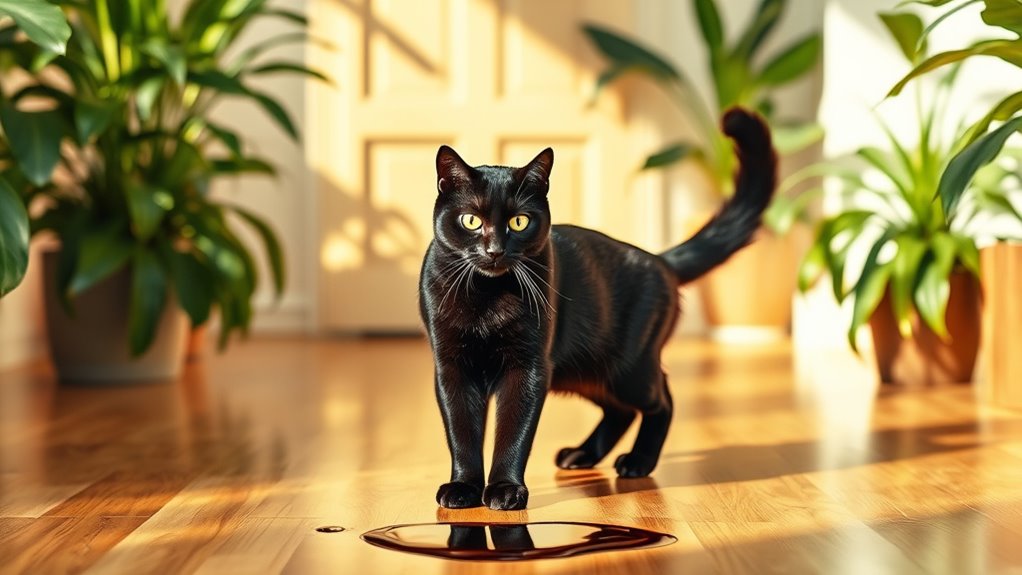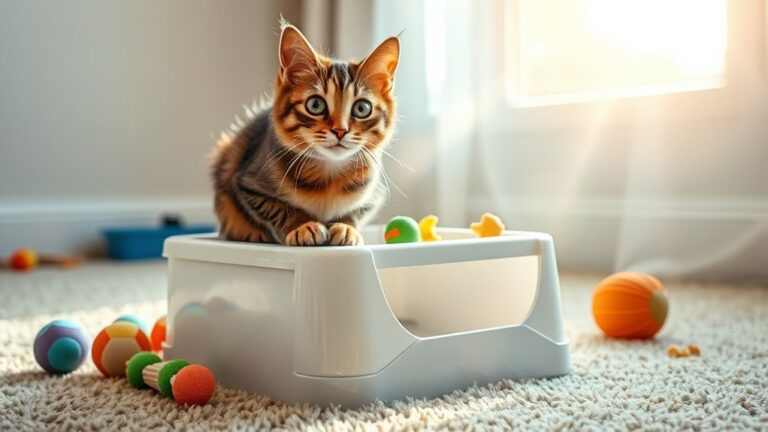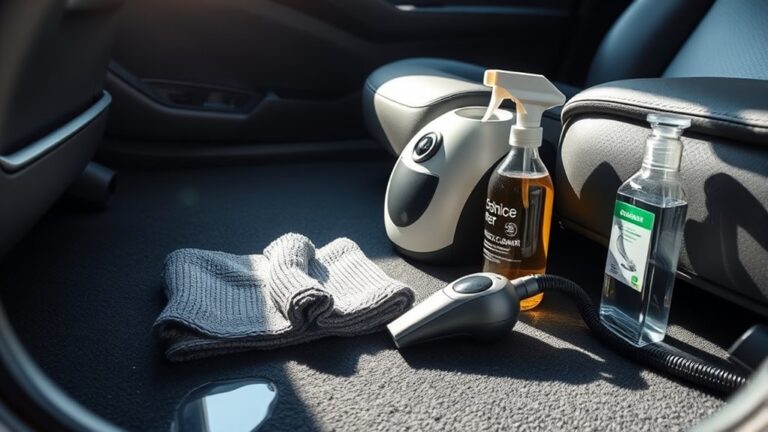If your cat pees on the floor, it could be due to medical issues like infections or kidney problems, stress from changes or new pets, or litter box problems such as cleanliness or location. Cats need a consistent, comfortable environment and proper hygiene to feel secure. Sometimes, floor peeing is their way of communicating discomfort or anxiety. Understanding the underlying causes can help you support your cat’s health and comfort—explore how to identify and address these factors effectively.
Medical Conditions That Cause Inappropriate Urination
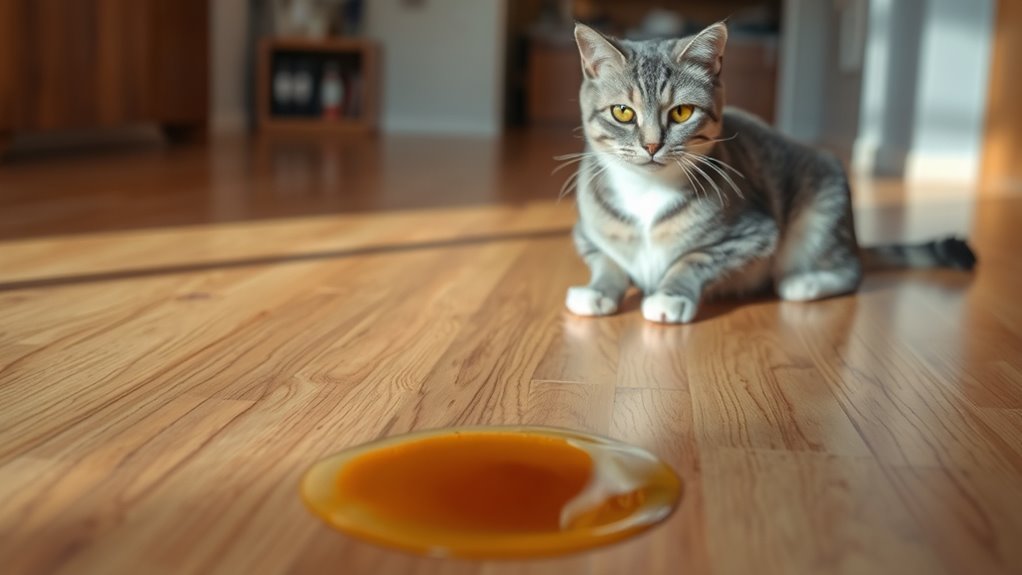
Although it can be frustrating when your cat pees on the Boden, it’s important to understand that medical conditions often play a significant role in this behavior. Urinary tract infections (UTIs) are a common cause, making your cat feel an urgent, painful need to urinate, sometimes outside the litter box. Kidney disease may also contribute, affecting your cat’s ability to regulate urination properly. If your feline friend suddenly changes their litter box habits, it’s essential to seek veterinary attention promptly. Addressing these health issues not only alleviates your cat’s discomfort but also restores their natural freedom to express normal behaviors. By recognizing medical causes, you can better support your cat’s well-being and prevent ongoing inappropriate urination.
Stress and Behavioral Factors Affecting Litter Box Use
When your cat starts peeing on the floor, stress and behavioral issues might be at play. Cats are sensitive creatures; anxiety triggers like loud noises, new pets, or changes in routine can cause them to avoid their litter box. Territorial behavior also plays a big role—if your cat feels its space is threatened, it might mark areas with urine to reassert control. You might notice this especially in multi-cat households or when new animals are introduced. Understanding these factors is key to helping your cat feel secure and comfortable. By identifying and minimizing anxiety triggers and respecting your cat’s need for territory, you can encourage proper litter box use again. Remember, patience and observation are your best tools in restoring harmony and freedom for both you and your feline friend.
Environmental Changes Impacting Your Cat’s Bathroom Habits
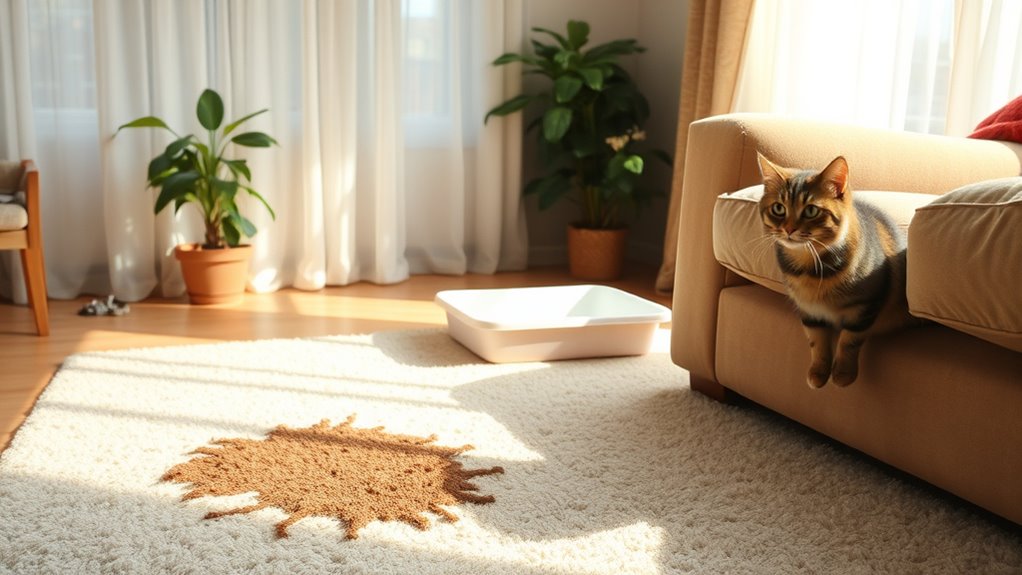
Changes in your cat’s environment can greatly influence their bathroom habits, often causing them to avoid the litter box. Moving to a new home is a major shift that can unsettle your cat’s sense of security, leading to accidents on the floor. The unfamiliar smells and layout may confuse them, making it harder to find or trust the litter box location. Additionally, any litter box changes—like switching the type of litter, moving the box, or altering its cleanliness—can disrupt your cat’s routine. Cats value consistency and may react negatively to these changes by peeing outside the box. To help your cat adapt, try maintaining a stable environment, introduce changes gradually, and place litter boxes in quiet, accessible areas. This approach supports your cat’s freedom to feel safe and comfortable.
Litter Box Issues That Lead to Floor Peeing
If your cat is peeing on the floor, one common cause could be issues related to their litter box. Understanding these factors can help you uncover why your feline friend is avoiding their designated spot.
- Litter box cleanliness: Cats are clean creatures. If the box isn’t scooped regularly or washed, your cat might seek a fresher place to go.
- Litter type: Cats can be picky. A change in litter texture or scent might make them uncomfortable, prompting them to avoid the box.
- Box location and size: If the litter box is in a noisy or hard-to-reach area, or if it’s too small, your cat may feel stressed and choose the floor instead.
Addressing these issues respects your cat’s natural preferences, offering them the freedom to use their litter box comfortably.
How to Address and Prevent Floor Peeing in Cats
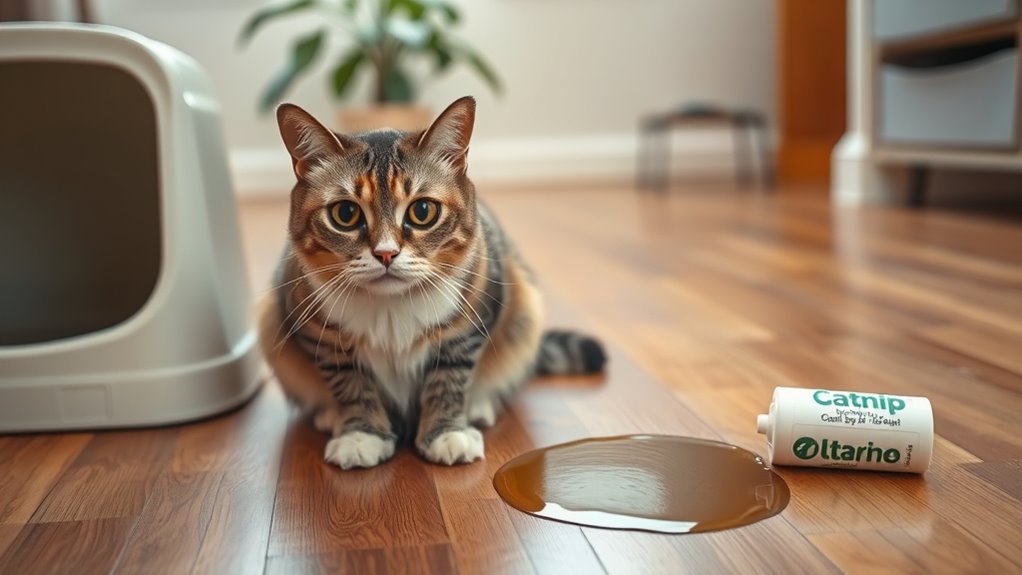
Although floor peeing can be frustrating, you can take practical steps to address and prevent it by understanding your cat’s needs and environment. Start by evaluating their litter box preferences—some cats favor specific types or locations, so offering multiple clean boxes in quiet, accessible areas helps. Pay attention to territorial marking; if your cat feels threatened or stressed by other pets, they might pee to assert dominance. Reducing stress through safe spaces and pheromone diffusers can ease this behavior. Clean any accidents thoroughly with enzymatic cleaners to remove odors that encourage repeat marking. If issues persist, consult a vet to rule out medical causes. By respecting your cat’s instincts and creating a supportive environment, you’ll encourage freedom from floor peeing and maintain harmony at home.

